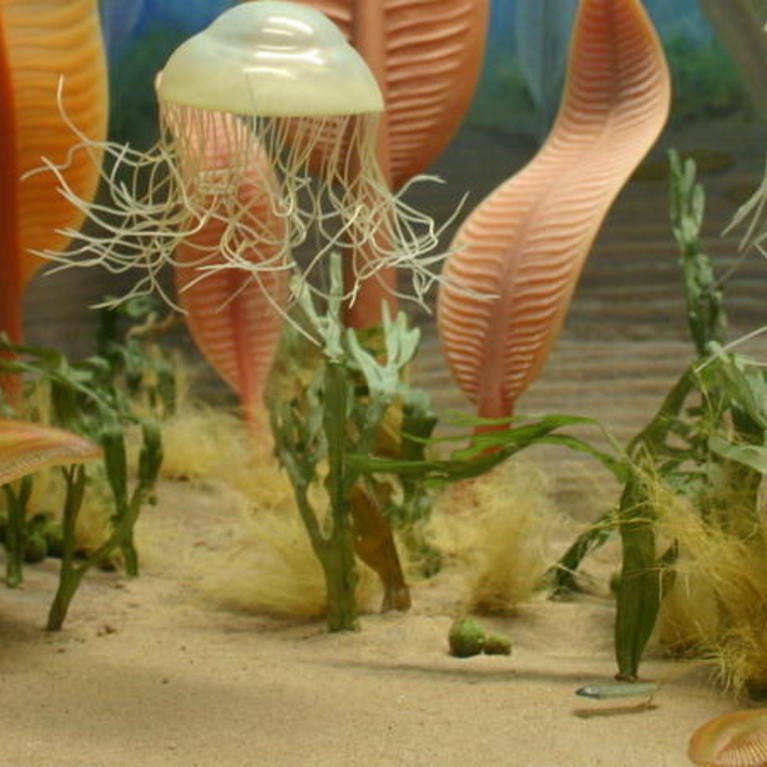Content Marked with: Mary Droser
National Academy of Sciences welcomes two UCR faculty members
The National Academy of Sciences (NAS) is the highest-profile scientific organization in the country, and membership in it is a career-defining honor newly bestowed on two UC Riverside professors: Mary Droser, distinguished professor of earth and planetary sciences, and Hailing Jin, Cy Mouradick Endowed Chair of microbiology and plant pathology. Read More
By Jules Bernstein |

National Academy of Sciences welcomes two UCR faculty members
The National Academy of Sciences (NAS) is the highest-profile scientific organization in the country, and membership in it is a career-defining honor newly bestowed on two UC Riverside professors: Mary Droser, distinguished professor of earth and planetary sciences, and Hailing Jin, Cy Mouradick Endowed Chair of microbiology and plant pathology. Though outstanding contributions to science...
By Jules Bernstein |

Tiny worm makes for big evolutionary discovery
Everyone has a past. That includes the millions of species of insects, arachnids, and nematode worms that make up a major animal group called the Ecdysozoa. Until recently, details about this group’s most distant past have been elusive. But a UC Riverside-led team has now identified the oldest known ecdysozoan in the fossil record and...
By Sarah Nightingale |

Earth’s first animals had particular taste in real estate
Even without body parts that allowed for movement, new research shows — for the first time — that some of Earth’s earliest animals managed to be picky about where they lived. These creatures from the Ediacaran Period, roughly 550 million years ago, are strangely shaped soft-bodied animals that lived in the sea. Researchers have long...
By Jules Bernstein |

Australian fossil goldmine opens permanently
Land where a UC Riverside paleontology professor unearthed whole communities of Earth’s oldest animals is opening today to the public as a new national park in the Australian Outback. Nilpena Ediacara National Park harbors the richest collection on Earth of preserved animal species from the Ediacaran era, around 550 million years ago. Some of the...

Earth might be experiencing 7th mass extinction, not 6th
Earth is currently in the midst of a mass extinction, losing thousands of species each year. New research suggests environmental changes caused the first such event in history, which occurred millions of years earlier than scientists previously realized. Read more.
Paleontology Professor Mary Droser wins National Academy of Sciences medal
For transforming our understanding of the earliest animals on Earth, UC Riverside Professor Mary Droser has won the National Academy of Sciences’ prestigious Charles Doolittle Walcott Medal. The medal, part of the academy’s Award in Early Earth and Life Sciences, is an honor bestowed on only one scientist in the world every eight years. It...

Research shows we’re surprisingly similar to Earth’s first animals
"The earliest multicellular organisms may have lacked heads, legs, or arms, but pieces of them remain inside of us today, new research shows. According to a UC Riverside study, 555-million-year-old oceanic creatures from the Ediacaran period share genes with today’s animals, including humans." Read More

Ancestor of all animals identified in Australian fossils
A team led by UC Riverside geologists has discovered the first ancestor on the family tree that contains most familiar animals today, including humans. The tiny, wormlike creature, named Ikaria wariootia, is the earliest bilaterian, or organism with a front and back, two symmetrical sides, and openings at either end connected by a gut. The...

Australia enables UCR to dig into Earth’s wild past
Australian officials signed an agreement last night allowing UC Riverside to continue its pioneering research on a government-owned goldmine for unusual fossils. Nilpena Station is city-sized plot of land in the Australian Outback. It harbors the richest collection on Earth of animal species around 550 million years old. Some of its fossil beds are the...
Let us help you with your search